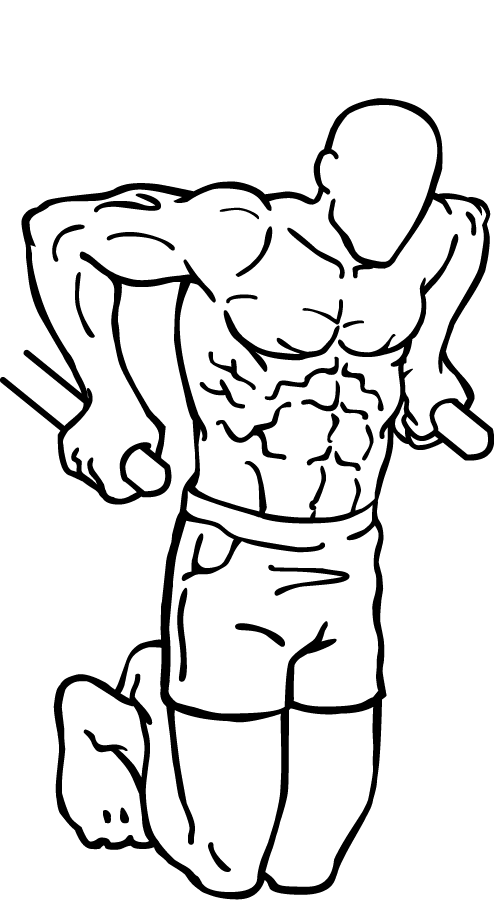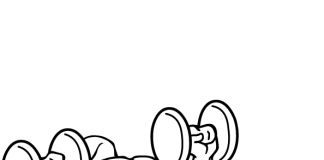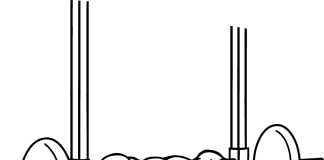Last Updated on September 30, 2014
Chest dips are a powerful upper-body exercise that targets the chest, triceps, and shoulders. This simple yet effective move is a favorite among fitness enthusiasts because of its ability to develop strength, build muscle mass, and improve upper body stability. Whether you’re looking to enhance your chest size, get stronger triceps, or develop those powerful shoulder muscles, chest dips are a great addition to your workout routine.
What Are Chest Dips?
Chest dips are an advanced bodyweight exercise that primarily engages the lower chest while also recruiting the triceps and shoulders. This exercise is typically performed on parallel bars, where the individual lowers and raises their body using the strength of their upper body. Chest dips are often underrated, but they are a potent way to enhance your upper body strength and muscular endurance.
Muscles Targeted During Chest Dips
When you perform chest dips correctly, you activate multiple muscle groups simultaneously, making it a compound exercise. The primary muscles targeted during chest dips include:
- Chest (Pectoralis Major): The main focus of chest dips is the lower part of the chest, particularly the sternal head of the pectoralis major. This movement stretches and contracts the chest muscles, helping you achieve a broader and stronger chest.
- Triceps (Triceps Brachii): As you push yourself up from the dip, your triceps are heavily engaged. This exercise is a great way to build stronger and more defined triceps.
- Shoulders (Anterior Deltoids): The anterior (front) deltoids work to stabilize and support your movement, giving your shoulders a serious workout.
- Secondary Muscles: While chest, triceps, and shoulders are the primary muscles worked during dips, your core, forearms, and upper back also assist in stabilizing your body during the movement.
Benefits of Chest Dips
Chest dips offer several benefits that make them a must-include in your upper body workout routine. Here are a few reasons why you should incorporate chest dips into your training:
- Increases Upper Body Strength: Dips are a compound exercise, which means they work multiple muscle groups at once. This leads to increased strength in the chest, triceps, and shoulders, as well as improved coordination and stability.
- Enhances Muscle Mass: Chest dips are an excellent exercise for building muscle mass, particularly in the chest and triceps. By performing dips with proper form and consistency, you can significantly increase your muscle size over time.
- Improves Flexibility and Range of Motion: The dip motion requires a full range of motion, which helps improve the flexibility of your shoulders and elbows.
- Minimal Equipment Required: All you need for chest dips is a set of parallel bars. Many gyms have a dip station, and you can also use portable dip bars at home or find outdoor stations in parks.
How to Perform Chest Dips: Step-by-Step Guide
Mastering the chest dip requires proper technique to avoid injury and maximize muscle activation. Here’s how to perform chest dips with the correct form:
- Setup:
- Stand between the parallel bars with your arms extended, gripping the bars firmly.
- Push yourself up so that your arms are straight, and your feet are off the ground. This is your starting position.
- Lowering Phase:
- Lean slightly forward as you bend your elbows, keeping them close to your body.
- Lower your body until your elbows are bent at about 90 degrees, or until you feel a good stretch in your chest muscles.
- Make sure your hips stay in line with your torso, and your head stays neutral to avoid strain on the neck.
- Allow your chest to lead the movement, which will help focus the work on your pectoral muscles.
- Raising Phase:
- Press yourself back up by straightening your arms, driving the motion from your chest and triceps.
- Avoid locking out your elbows at the top of the movement to maintain tension on your muscles and protect your joints.
- Squeeze your chest at the top of the movement for maximum contraction.
- Repeat:
- Perform the desired number of repetitions, maintaining control throughout each rep. Aim for 8-12 reps for muscle building or 15-20 reps for endurance.
Common Mistakes to Avoid During Chest Dips
Chest dips are an effective exercise, but only when performed with the correct technique. Here are some common mistakes to avoid to ensure that you get the most out of your chest dips and avoid injury:
- Leaning Back Too Much: Leaning back places more emphasis on the triceps and less on the chest. If your goal is to work your chest, make sure to lean forward slightly during the lowering phase.
- Not Going Low Enough: A common mistake is not lowering your body deep enough into the dip. To fully activate your chest muscles, you need to lower yourself until your elbows are bent at 90 degrees.
- Flaring the Elbows: Letting your elbows flare out too much can strain your shoulders and reduce the effectiveness of the movement. Keep your elbows tucked in close to your body.
- Locking the Elbows: Locking your elbows at the top of the movement can put unnecessary stress on your joints. Instead, keep a slight bend in your elbows to maintain tension on the muscles.
Chest Dips Variations
Once you’ve mastered the basic chest dip, you can try different variations to challenge yourself further or to target your muscles in different ways.
- Weighted Chest Dips: Once bodyweight dips become too easy, you can add extra resistance by wearing a dip belt with weights attached. This increases the difficulty and helps build even more strength and muscle mass.
- Assisted Chest Dips: If you’re struggling to perform regular chest dips, you can use a resistance band or an assisted dip machine to make the exercise easier until you build enough strength to do unassisted dips.
- Bench Dips: Bench dips are a great alternative if you don’t have access to parallel bars. Use two benches or chairs and place your hands on one and your feet on the other, performing the dip motion as usual.
- Ring Dips: For an added challenge, try performing dips on gymnastic rings. This variation requires greater stability and works more muscle groups due to the instability of the rings.
Incorporating Chest Dips Into Your Workout Routine
Chest dips are a versatile exercise that can be included in various ways within your workout program. Whether you’re training for strength, size, or endurance, you can adjust your dip routine to match your goals.
- Strength Training: For strength gains, perform dips using a lower rep range (4-6 reps) and add additional weight using a dip belt or weighted vest.
- Hypertrophy (Muscle Building): For muscle building, aim for a moderate rep range (8-12 reps) using your body weight or light added resistance.
- Endurance: For muscular endurance, perform higher rep sets (15-20 reps) with little to no added weight.
Here’s an example of a workout split that includes chest dips:
- Day 1: Chest and Triceps:
- Bench Press: 4 sets of 6-8 reps
- Chest Dips: 4 sets of 8-12 reps
- Triceps Pushdowns: 3 sets of 10-12 reps
- Incline Dumbbell Press: 3 sets of 8-10 reps
- Overhead Triceps Extension: 3 sets of 10-12 reps
- Day 2: Shoulders and Core:
- Overhead Shoulder Press: 4 sets of 8-10 reps
- Lateral Raises: 3 sets of 12-15 reps
- Chest Dips: 4 sets of 10-12 reps
- Planks: 3 sets of 60 seconds
This type of routine allows you to hit your chest, triceps, and shoulders while ensuring enough rest between sessions for recovery and growth.
Chest Dips for All Fitness Levels
One of the great things about chest dips is that they can be modified for any fitness level. Beginners can start with assisted dips or bench dips, while advanced lifters can challenge themselves with weighted or ring dips. As you progress, you’ll notice improvements in your upper body strength, muscle definition, and overall stability.
If you’re new to chest dips, here are some tips to ease into the exercise:
- Start Small: Perform a few sets of assisted dips or bench dips to build your strength. Aim for 8-10 reps and gradually reduce the assistance over time.
- Improve Mobility: Ensure your shoulders and elbows have a good range of motion. Regularly stretching your chest and shoulders can help improve mobility and reduce the risk of injury.
- Practice Consistently: Like any exercise, consistency is key. Make dips a regular part of your upper body workout routine to see improvements in strength and muscle growth.
Safety Tips and Precautions
While chest dips are highly effective, they can also be demanding on your shoulders and elbows. To avoid injury and perform this exercise safely, keep these tips in mind:
- Warm Up Thoroughly: Before attempting chest dips, make sure to warm up your upper body with dynamic stretches and light cardio. This prepares your muscles and joints for the workout ahead.
- Listen to Your Body: If you experience any pain in your shoulders or elbows during chest dips, stop immediately. It’s important not to push through pain, as this can lead to injury.
- Use Proper Form: Focus on maintaining good form throughout the exercise. Avoid rushing through the movement or sacrificing technique for more reps. Controlled movements and proper form will help prevent injuries and ensure you’re targeting the right muscles.
- Avoid Overloading: While adding weight to chest dips can be beneficial for building strength, be cautious not to overload your body too soon. Gradually increase the weight and ensure you can still perform the exercise with good form.
- Stretch Post-Workout: After performing chest dips, take time to stretch your chest, shoulders, and triceps. This helps to reduce muscle tightness and improve flexibility.
Frequently Asked Questions About Chest Dips
1. How often should I perform chest dips?
- You can incorporate chest dips into your routine 1-2 times per week, depending on your overall workout schedule. Allow for adequate rest between sessions to ensure proper recovery and muscle growth.
2. Are chest dips better than push-ups?
- Both exercises have their benefits, but chest dips are often considered more challenging because they require more upper body strength and stability. Push-ups are great for beginners and can help build foundational strength, while chest dips target the chest, triceps, and shoulders more intensely.
3. Can chest dips help build a bigger chest?
- Yes, chest dips are an excellent exercise for building the lower portion of the chest, contributing to overall chest development. Combining dips with other chest exercises, such as bench presses and push-ups, will lead to more balanced growth.
4. Should I do chest dips if I have shoulder pain?
- If you experience shoulder pain during chest dips, it’s important to stop the exercise and consult a healthcare professional or physical therapist. Shoulder pain can indicate an underlying issue that may need to be addressed before continuing dips.
5. How can I progress from beginner to advanced chest dips?
- Start with assisted dips or bench dips and gradually work your way up to unassisted dips. As you gain strength, you can add resistance with a dip belt or perform more challenging variations, such as ring dips.
Mastering the Chest Dip for Optimal Upper Body Gains
Chest dips are one of the most effective exercises for building strength and muscle mass in the upper body. By incorporating them into your routine, you can expect to see significant improvements in your chest, triceps, and shoulders. Whether you’re a beginner or an advanced lifter, chest dips offer a range of variations and progressions to keep challenging your muscles and driving results.
Remember, the key to getting the most out of chest dips is consistency, proper form, and gradual progression. By avoiding common mistakes and following the tips provided in this guide, you’ll be well on your way to mastering chest dips and unlocking your upper body potential.
So, next time you’re at the gym or working out at home, don’t overlook the power of chest dips. With practice, dedication, and the right approach, you’ll build a stronger, more defined upper body and take your fitness to the next level.
Incorporate Chest Dips Today!
Now that you know everything there is to know about chest dips, it’s time to put them into action. Start by incorporating them into your weekly routine, and you’ll soon notice gains in strength, size, and endurance. Whether you’re aiming for a bigger chest, stronger triceps, or well-defined shoulders, chest dips are a surefire way to achieve those goals.
Make sure to track your progress, adjust your workout as needed, and challenge yourself with different variations as you become more advanced. Chest dips are a simple but highly effective exercise that can lead to impressive results when performed correctly and consistently.


Exercise images by Everkinetic.






